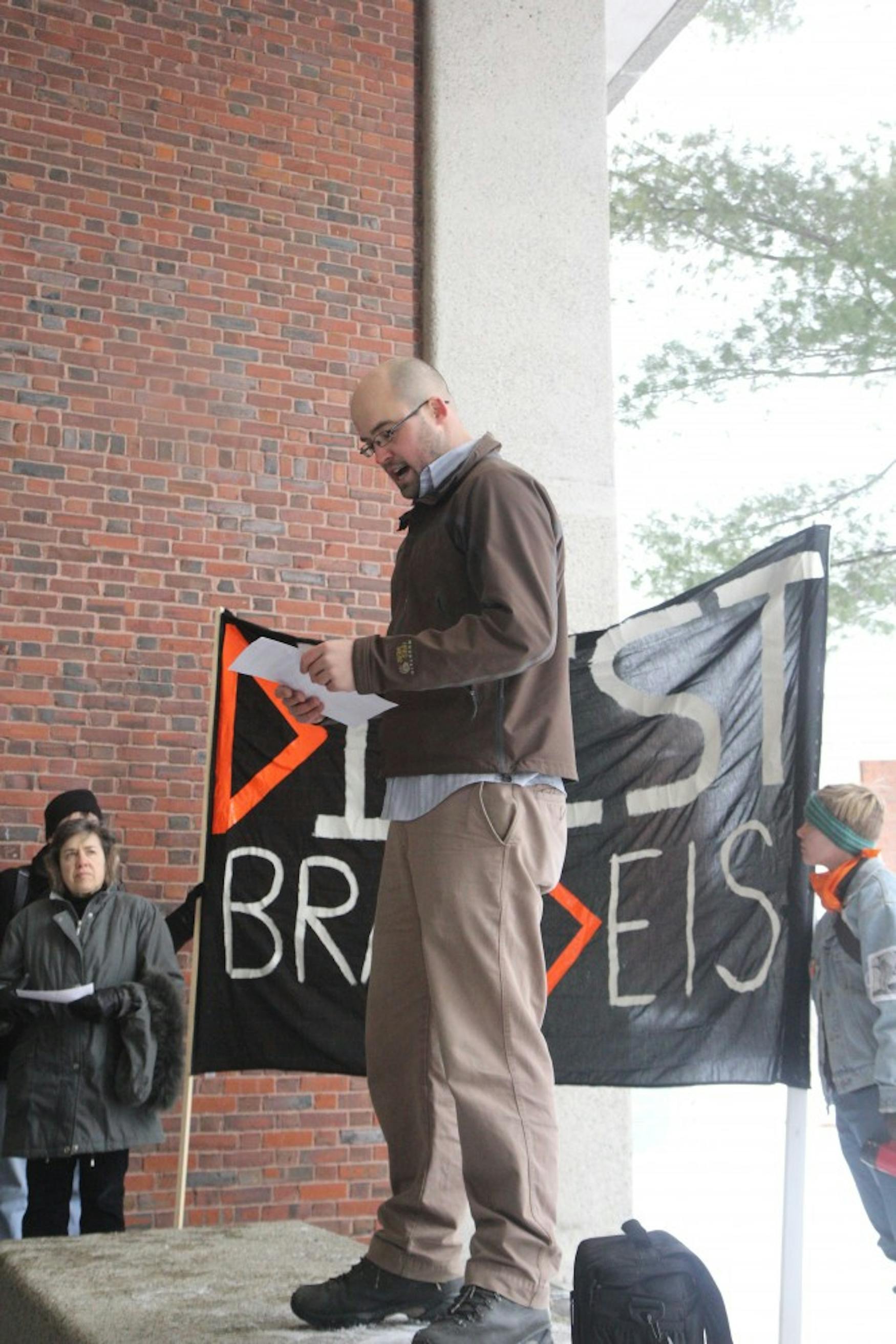Administrators discuss future campus sustainability goals
Last Thursday, the Senate Sustainability Committee hosted its second annual State of Sustainability Town Hall, in which students questioned administrators on the progress of sustainability initiatives on campus. The administrators discussed several sustainability improvements the University has made, including the hiring of a new sustainability manager, the large reduction in natural gas usage and an initiative to use more solar energy on campus.
The event was held as a part of the Sustainability Committee’s Eco-Week. It consisted of presentations from various on-campus groups committed to sustainability and environmental issues, as well as a panel of administrators, who responded to students’ questions about sustainability on campus. Founder and Chair of the Student Union Senate Sustainability Committee Anna Bessendorf ’15 moderated the panel, which also included Vice President of Operations Jim Gray, Energy Manager Bill Bushey and Associate Director of the Environmental Studies Program Prof. Laura Goldin (ENVS).
Bushey discussed the cost of energy usage on campus, stating that the University spends about $12 million annually on energy, mostly on electricity and natural gas. He said that while the University has “made great strides” in reducing the energy usage on campus, conservation measures are costly and the addition of many new buildings has made it harder to cut back. However, according to Bushey, there has been a 25 percent reduction in natural gas usage over the past nine years, which he said is a big decrease. Bushey also said that both electric usage meters and condensation meters have been added in many buildings across campus to monitor the usage of electricity and natural gas respectively.
In discussing sustainability changes over the years, Goldin said that many of the changes made in the 15 years she has been with the University have been “mainly due to student interest in sustainability.” The increase in environmental groups across campus and the push from students for greener initiatives has led to both more sustainable efforts and the idea to hire a new sustainability manager on campus. According to Goldin, the manager will be “focusing 100 percent of their time on making campus more sustainable.”
According to its website, Brandeis began an Energy Savings Program in 2004, resulting in financial savings and energy use reduction. In 2012, the University implemented the Brandeis Sustainable Energy Program, which was a five million dollar investment toward energy efficiency. “Energy reduction is a very slow process,” Bushey said, mentioning that many of the annual goals the University sets are very ambitious. However, he also mentioned that the University’s commitment to sustainability is very real and that immense progress has been made in just the past few years.
The panelists also discussed the University’s goals and future plans for sustainability on campus. The goals include an increase in composting waste, a move toward LED light bulbs, and sustainable renovations in Sherman Dining Hall, such as improvements to the ventilation systems and the replacement of older equipment. Gray mentioned that another big step the University is trying to take is increasing its use of solar energy over time.
Solar power is already used to heat water in the Charles River Apartments, offsetting the burning of oil that is typically used, and a solar power system on the roof of Gosman Sports and Convocation Center is used for energy in both the gym and in the Foster Mods.
The panelists concluded by mentioning the many ways students can contribute to sustainability and energy reduction on campus. Changing some daily habits, Gray told the crowd, can lead to large reductions in student energy usage; closing windows, decreasing the heat in dorm rooms, turning lights off and unplugging chargers can all help.
“It’s not just conservation initiatives by the University, or the altering of fuel usage that will change things,” Goldin said. “It’s student and faculty behavior and understanding that…it’s something all of us can do.”
Student groups also discussed the progress that they have made to increase sustainability on campus. Students for Environmental Action, the largest environmental group on campus, discussed the group’s ongoing commitment to environmental service as well as several initiatives they plan to implement in the spring, such as a reusable shopping bag program, tree plantings across campus and continued electronic waste collections.
Michael Abrams ’15, the head of the recently chartered club Brandeis Climate Justice, discussed his club’s commitment to divestment on campus. The group has been urging the University to divest from fossil fuel companies and put the money toward investments in companies that use cleaner energy. Earlier this month, Brandeis Climate Justice held a Global Divestment Day Rally on campus, in which many students and faculty members participated.
Finally, Stephanie Weinstein ’17 from the Brandeis Sustainability Fund discussed contributions that the fund has made toward increased sustainability, including dual-flush toilets across campus and “Tap Brandeis,” an effort to increase the usage of reusable water bottles. She said that BSF will continue to fund important sustainability projects throughout the semester and the next few years.



Please note All comments are eligible for publication in The Justice.